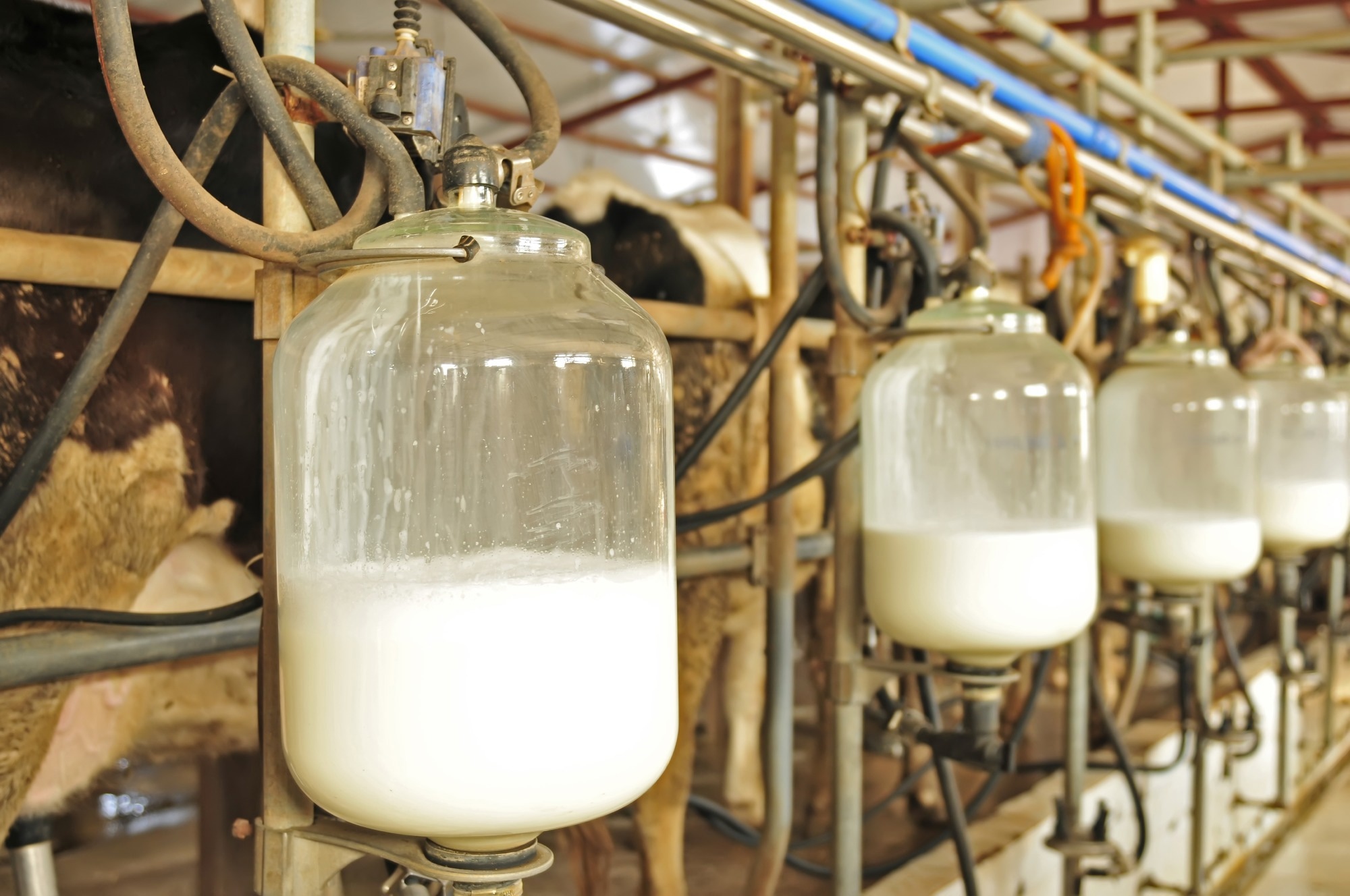Hidden risks for consumers and dairy workers in unpasteurized milk. A new study reveals that bird flu can persist in raw milk for days.
 Study: Stability of influenza viruses in the milk of cows and sheep. Image credit: pan demin/Shutterstock.com
Study: Stability of influenza viruses in the milk of cows and sheep. Image credit: pan demin/Shutterstock.com

 *Important notice: medRxiv publishes preliminary scientific reports that are not peer-reviewed and, therefore, should not be regarded as conclusive, guide clinical practice/health-related behavior, or treated as established information.
*Important notice: medRxiv publishes preliminary scientific reports that are not peer-reviewed and, therefore, should not be regarded as conclusive, guide clinical practice/health-related behavior, or treated as established information.
A recent study currently available on the medRxiv* preprint server evaluated the duration for which influenza viruses remain viable in milk without heat inactivation.
Influenza viruses
Following up on the report of significantly reduced milk yield in the US, scientists identified a highly pathogenic, circulating avian influenza virus (HPAIV) in dairy cattle in March 2024. Phylogenetic analysis revealed that this virus was first introduced into cattle in late 2023.
Although cattle are known to be susceptible to influenza A viruses (IAVs), few incidences of HPAIV infection in cattle have been documented. Influenza viruses in mammals typically behave as respiratory infections; in contrast, HPAIV in cattle was shed at extremely high levels in milk.
In the US, H5N1 HPAIV was found to rapidly spread in over a thousand herds of cattle and dozens of dairy workers. Although pasteurized milk does not contain viable H5N1 HPAIV, unpasteurized or raw dairy carries the infection risk via consumption or occupational exposure.
For instance, certain dairy workers have developed unilateral conjunctivitis after accidentally splashing milk into their eyes while milking without proper eye or face protection. These patients were diagnosed with H5N1 HPAIV infection from exposure to infected cattle. Several people also contracted the disease without having direct contact with the infected animals.
Interestingly, the genetic material of H5N1 HPAIV was detected in consumer dairy products across the USA. Previous studies have shown that virus material remains stable in milk or certain milk products, such as cheese, for an extended period. Over 50% of cats on a Texas dairy farm contracted an infection after consuming H5N1-contaminated cow milk. However, the infectious dose required for humans to become sick from drinking contaminated milk is still unknown.
Understanding the duration for which H5N1 influenza remains stable in contaminated milk is essential.
About the study
The current study evaluated the stability of influenza viruses in unpasteurized milk. Various influenza viruses, including H5N1 HPAIV, were tested for viability in the milk of cows and sheep at both room temperature (simulating dairy farm environments) and 4°C (simulating customer refrigeration).
The wild-type strain of H5N1 HPAIV was used under SAPO containment level 4 conditions to test the virus's stability in milk. The stability and pathogenicity of other influenza viruses, such as avian influenza A (LPAIVs) and influenza D viruses, were also assessed.
Test viruses were independently mixed with unpasteurized milk at a 1:10 (v/v) ratio and were incubated in closed tubes to prevent evaporation. These tubes were stored in sealed polystyrene boxes to avoid UV light inactivation. Subsequently, the virus-containing tubes were incubated at either room temperature (~20°C) or chilled (~4°C) for up to 12 days. The virus was mixed 1:10 with phosphate-buffered saline (PBS) for the control treatment and stored under identical conditions. Viral infectivity was assessed using TCID assays.
Study findings
Experimental findings indicated that the H5N1 virus gradually lost its infectivity over time in milk, both at room temperature and when refrigerated. In both experimental conditions, the infectious titers remained detectable in raw milk for over a week.
A substantial variation in the stability of influenza viruses in milk was observed, particularly at room temperature. Certain viruses remained viable at room temperature for more than eleven days, while others reached the detection limit within two days. In chilled conditions, most viruses remained infectious for over seven days, and some remained viable even longer.
In sheep’s milk, H5N1 HPAIV remained infectious for more than seven days at 4°C and up to four days at room temperature.
Conditions in the study laboratory, such as UV light, detergents, and microbial activity, were deliberately controlled to exclude many environmental factors that would reduce virus survival; therefore, the virus's persistence may be shorter in a real-world setting.
Variation in virus stability was observed depending on the specific virus strain and the type or batch of milk used. This suggests that biological and chemical differences in milk can affect how long the virus remains infectious.
Conclusions
The current study confirmed that influenza viruses remain infectious in milk for a long time, posing a plausible threat to human health.
Experimental findings revealed that H5N1 and other influenza A viruses remained infectious in the raw milk in the absence of inactivating factors (e.g., ultraviolet light, detergents, or desiccation) for over a day at room temperature and more than seven days at 4°C. Therefore, unpasteurized milk obtained from the areas where infected cows or other dairy animals are shedding the virus could be a potential source of H5N1 HPAIV infection.
However, the study emphasized that while the presence of infectious viruses in raw milk for extended periods is possible, it remains unclear what dose is required to infect humans through consumption, and further research is needed to determine the actual risk to consumers.
Download your PDF copy now!

 *Important notice: medRxiv publishes preliminary scientific reports that are not peer-reviewed and, therefore, should not be regarded as conclusive, guide clinical practice/health-related behavior, or treated as established information.
*Important notice: medRxiv publishes preliminary scientific reports that are not peer-reviewed and, therefore, should not be regarded as conclusive, guide clinical practice/health-related behavior, or treated as established information.